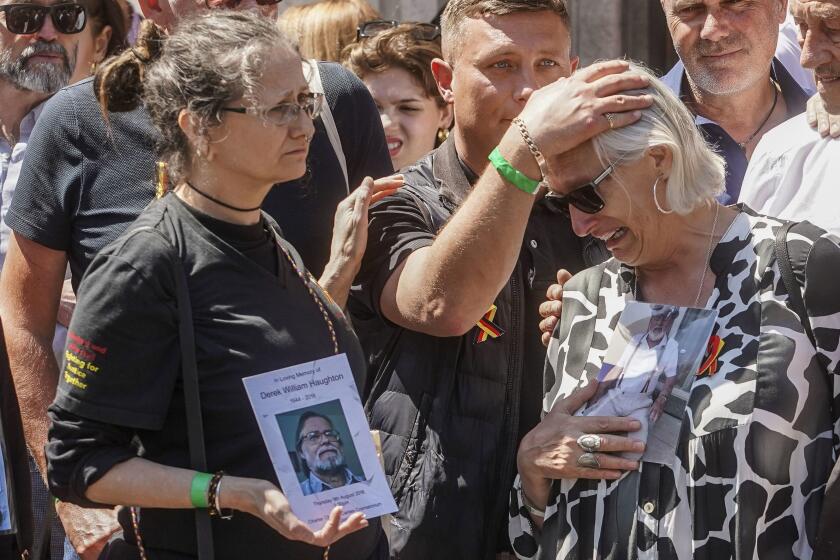Butterfly Room a Place Where Dying Children Can Fly : Hospice: University of Texas offers an alternative to cramped, noisy intensive care units, and a chance to die in peace, surrounded by loved ones.
Rayna Jane Robin lived just eight days, but she lived them in peace, her mother and father at her side, away from the cramped and noisy intensive care unit.
She lived her short life in the Butterfly Room, a pediatric hospice at the University of Texas Medical Branch Children’s Hospital. If she never had a chance to survive--her kidneys did not develop--at least she would die enveloped by love.
“It really was nice just to be able to be in the same room with her and to be able to hold her,” said her 26-year-old mother, Tina Robin. “It really helped to be able to be with her as long as we could.”
The suite--once two semiprivate hospital rooms with four beds--was large enough to accommodate the Vidor, Tex., couple and another relative and could have held the Robins’ other two children if they wished. They had pullout beds, a kitchenette, a shower and a window seat with a serene view of a courtyard.
Other terminally ill children and their families have followed the Robins in the Butterfly Room--named to represent transition--since it opened in January. Most of the patients have been under 3 years old, their illnesses ranging from heart failure to AIDS. One used the room for two days; another for 19.
“We can assure them of certain things that most people fear about dying,” said Dr. Marcia Levetown, medical director of the hospital’s Pediatric Hospice Program.
“They fear being in pain. They fear being abandoned. They fear not seeing their family. And we can assure them through our program that none of those fears will be realized.”
About 1 1/2 years ago, Levetown began researching ways to help parents deal with losing a child.
“I didn’t like the way we did deaths in pediatric critical care,” she said.
“When I would call families months later to find out how they were doing after the loss of their child, they would be completely dysfunctional and hysterical. The ripple effect of not doing what you’re supposed to do to take care of families is phenomenal.”
She learned about a hospice within St. Mary’s Hospital for Children in Bayside, N.Y. That program, the first inpatient pediatric hospice in the nation, dedicates 10 beds to palliative--pain lessening, but not curing--care.
Parents can cook meals and stay overnight in the unit, which has been operating for 10 years, said Dr. Neil Lombardi, the hospital’s vice president of medical services.
“We’ve gotten to the point where people are facing the fact that children do die. They do suffer from illnesses that are lethal. We can’t cure everything,” he said.
An intensive care unit is no place for children to spend their final days, he said. “If the child is going to die anyway, it’s better for the family and the child to be in a more comfortable setting.”
After reading about the St. Mary’s hospice and Edmarc Hospice for Children in Portsmith, Va.--an agency that has provided home-based hospice care for 16 years--Levetown outlined a plan for the Butterfly Room.
Some doctors support the hospice, but others “feel that being a doctor means trying to cure,” she said.
Levetown does not insist that patients choose hospice care. It is just an option.
“Some children are going to die,” she said, “and you have to allow them the freedom to transition to death in a comfortable way.”
More to Read
Start your day right
Sign up for Essential California for news, features and recommendations from the L.A. Times and beyond in your inbox six days a week.
You may occasionally receive promotional content from the Los Angeles Times.






